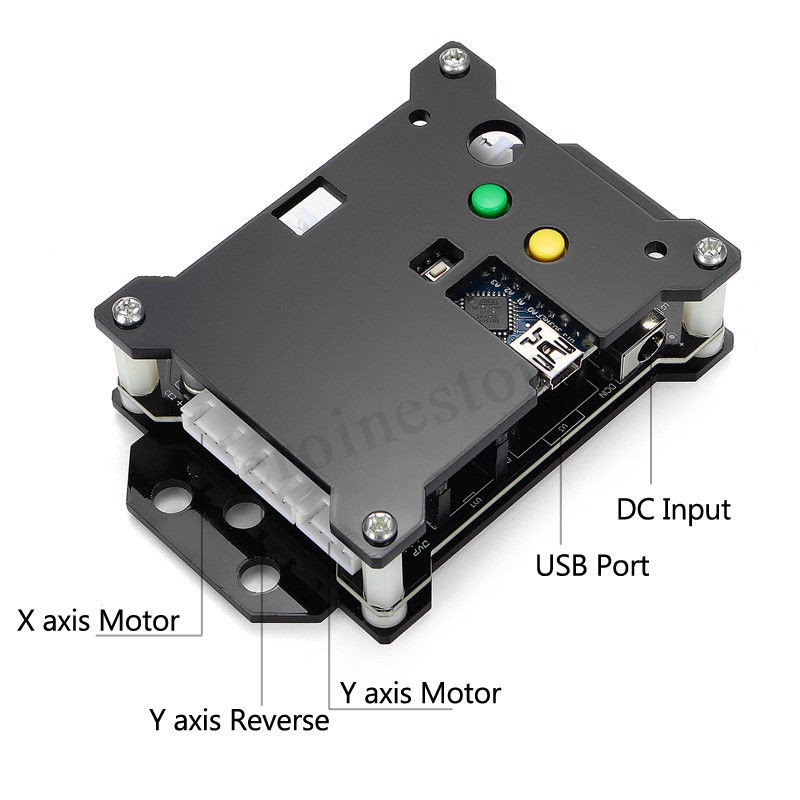
- #Grbl controller 3.4.6 zip how to
- #Grbl controller 3.4.6 zip install
- #Grbl controller 3.4.6 zip serial
- #Grbl controller 3.4.6 zip driver
Run source ~/.bash_add to make Terminal aware of where all the software we'll need to use is located. There are a few ways to do this, including editing the aforementioned files in the text-editor of your choice.Įcho "export DEVPATH='/dev/tty.usbmodem1411'" > ~/.bash_addĮcho "export AVRPATH='~/Downloads/Arduino.app/Contents/Java/hardware/tools/avr/bin'" > ~/.bash_add or a new file ~/.bash_add where we'll temporarily store these since we only need them for this. Mine were in /Arduino.app/Contents/Java/hardware/tools/avr/bin So adding them to my path would look like echo "export PATH='Arduino.app/Contents/Java/hardware/tools/avr/bin:$PATH'" > ~/.bash_add" (note the colon separating the path)Īdd $DEVPATH to.
#Grbl controller 3.4.6 zip how to
TODO How to find the compilers on your computer. Step 3 - Configure PathsĭO NOTE THAT THE PATHS MAY BE QUITE DIFFERENT ON YOUR MACHINE.Īdd all those AVR compilers to your computer's $PATH. I'm not sure what the default configuration is, but it's Cartesian, not CoreXY. The ports you wired need to be detailed here. Go ahead and open config.h in the /grbl subdirectory and start editing it according to the custom thing you just built. Git clone Step 2 - Configure for your hardware. I think this is how they expect the wiring to be by default: Step 1 - Clone the GRBL directory Getting GRBL onto a fresh Arduino / Controller Throw those edits and instructions up in this tutorial, share it with others. TODO Use sys package and create an alias so that you can run a gcode file located anywhere on your computer (to run the above, you would have to be in the same directory as the two files).
#Grbl controller 3.4.6 zip serial
You can also get a sense of what is going on in the python file above and stream GCode commands one-by-one through Python using IPython but at that point, I suggest looking up how to send/receive over the Serial port directly through command-line tools. Now you can just run python streamGcode.py Name this file streamGcode.py (or whatever)Ĭreate a new file named grbl.gcode and put your code in there. Raw_input(" Press to exit and disable grbl.") # Wait here until grbl is finished to close serial port and file. Grbl_out = s.readline() # Wait for grbl response with carriage return S.write(l + '\n') # Send g-code block to grbl L = line.strip() # Strip all EOL characters for consistency S.flushInput() # Flush startup text in serial input Time.sleep(2) # Wait for grbl to initialize # Open grbl serial port => CHANGE THIS BELOW TO MATCH YOUR USB LOCATION Google around until your device is listed in /dev/.Ĭopy this to a.
#Grbl controller 3.4.6 zip driver
You might need a driver to make sure your computer can communicate with your Arduino.Ĭhinese knock-offs sometimes don't play nice with these.
#Grbl controller 3.4.6 zip install
Git clone cd pyserial & python setup.py install Get the dependency that allows python to send and receive information over your USB ports. ino files to upload via the Arduino software that run your GCode. You can also follow examples on GRBL's github source to see. If you're using the Arduino software, connect to the chip through there and open up the Serial Monitor. The numbers will be unique to your computer. If you have the Arduino software, use the drop down menus to identify an address like /dev/ttyusb# or /dev/wchusbserial# Once the firmware is on your board, connect it via USB, power it on, and search in your /dev/ directory for your Arduino (type that into Terminal and start typing "tty" and then hit Tab until something shows up). You can use any number of GUIs but the premise is always the same. I'll outline the process of how to do that in the section below this one and fill in the details as I get around to figuring them out. It would definitely be good to get v1.1 working in order to learn the process of getting it on a fresh Arduino board.

The documents for newer version are up there too, obviously.

My machine (basically this build: ) has GRBL 0.9 :

Instructions for a machine with GRBL already on it


 0 kommentar(er)
0 kommentar(er)
